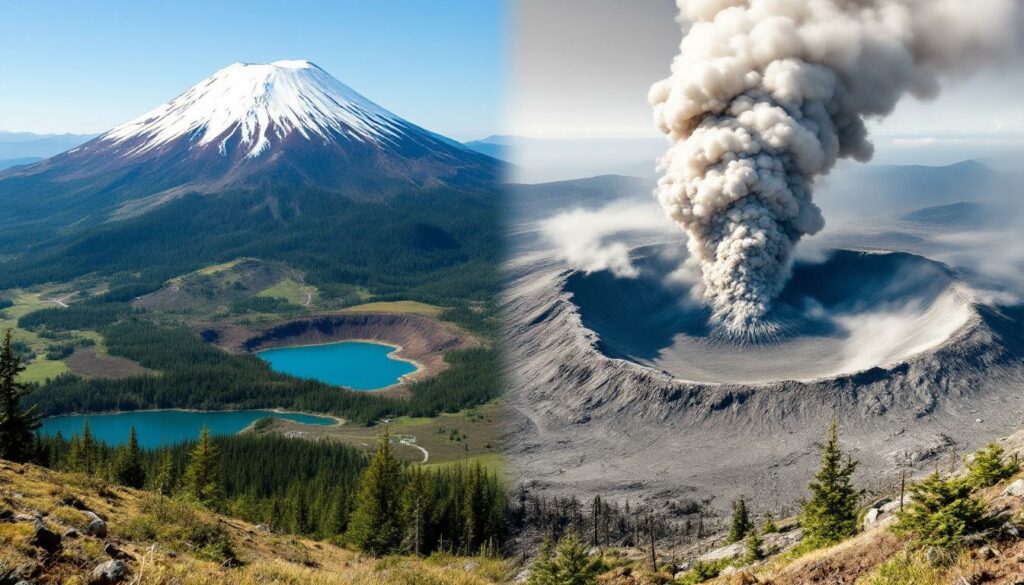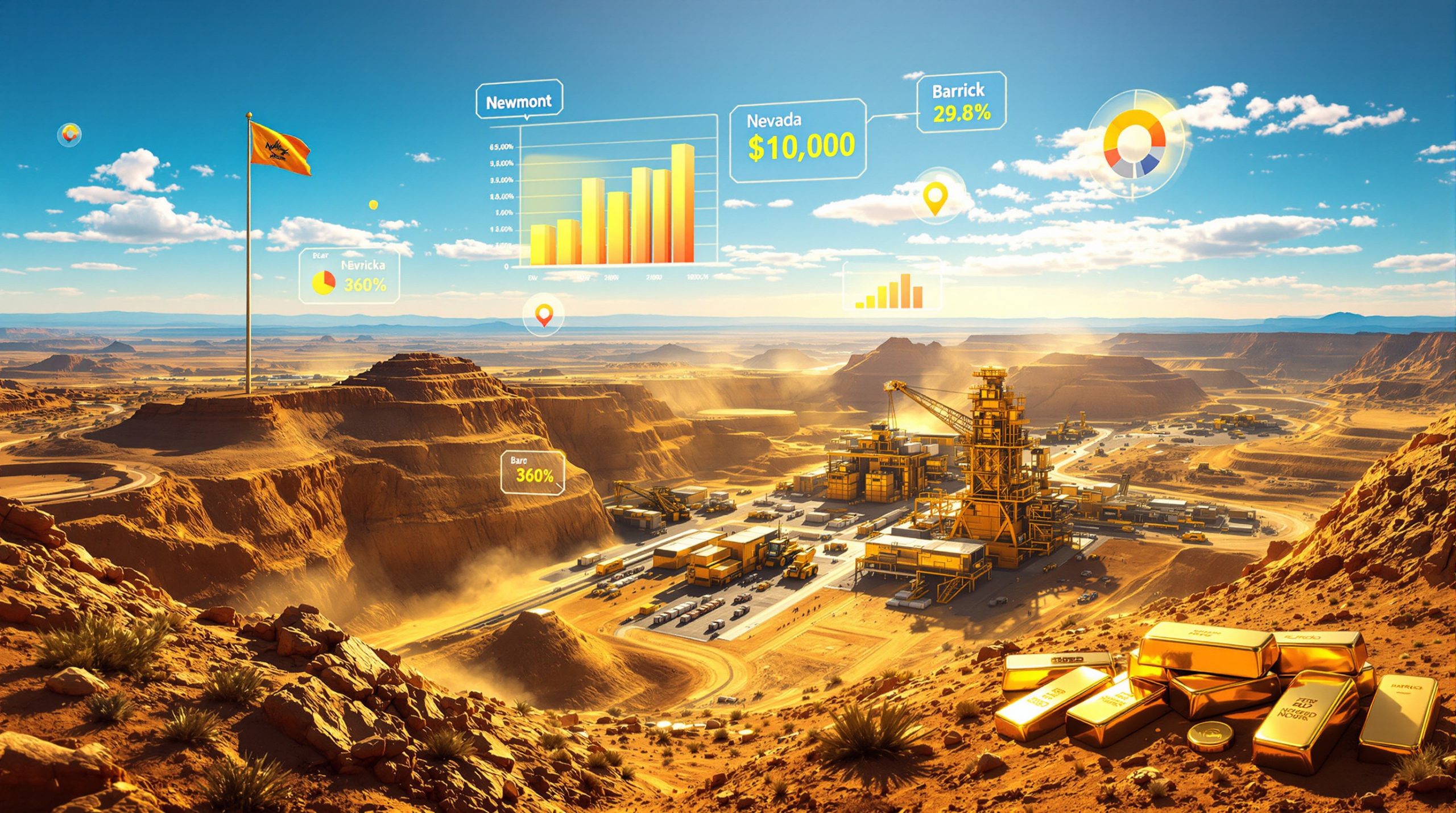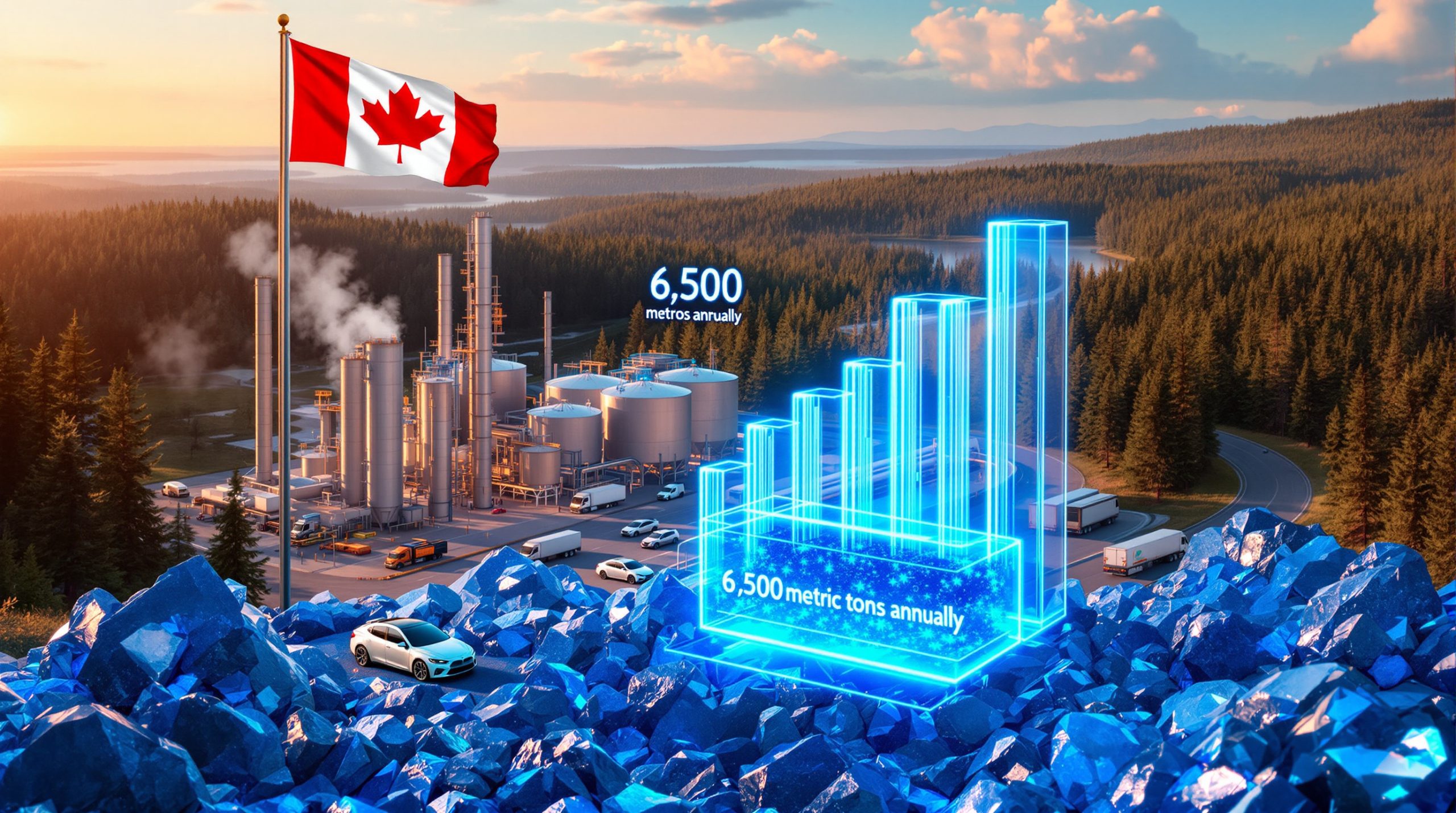What Happened During the Mount St. Helens Eruption?
The 1980 eruption of Mount St. Helens fundamentally changed both the surrounding landscape and our understanding of volcanic processes. This catastrophic event sent approximately 0.26 cubic miles of ash into the atmosphere and dramatically altered the topography of the region. One of the most striking impacts involved Spirit Lake, which was largely displaced when the mountain erupted, with water "washing up the hillsides before splashing back down" as observed by field researchers.
The eruption caused approximately $1.1 billion in damages (in 1980 USD) but created unique research opportunities by clearing trees and accelerating erosion in the blast zone. This deforestation allowed geologists unprecedented access to exposed bedrock and geological features that would otherwise remain hidden beneath dense forest cover.
"The 1980 blast zone created a natural laboratory for studying volcanic processes," notes Michael Eddy, volcanologist at Purdue University. "We gained insights that would have been impossible to obtain in vegetated terrain."
This natural laboratory continues to provide valuable insights into volcanic processes decades after the initial event, with ongoing research revealing new details about how volcanic systems evolve over time.
The Geological Significance of the 1980 Eruption
The eruption's impact extended far beyond the immediate destruction. The dramatic displacement of Spirit Lake created new sedimentary deposits and erosional patterns that geologists continue to study today. These deposits preserve valuable information about the dynamics of volcanic events and their environmental impacts.
The blast zone's rapid erosion following the loss of vegetation created exceptional conditions for geological mapping. According to USGS reports, this circumstance allowed scientists to create detailed 1:24,000 scale maps of the area—among the most precise geological documentation ever produced. These maps have revealed compositionally diverse volcanic rocks that help reconstruct the region's geological history.
"Post-eruption mapping exposed relationships between rock units that would have remained hidden for centuries without the 1980 event," explains Rachel Miller, PhD student at Purdue University studying the region's volcanic history.
The landscape continues to evolve today, providing a real-time laboratory for studying geological processes that typically occur over much longer timescales.
How Do Geologists Study Ancient Volcanic Systems?
Studying ancient volcanic systems requires integrating multiple research approaches. Modern volcanologists combine traditional field mapping with advanced laboratory techniques to reconstruct the history and behavior of volcanic systems that were active millions of years ago.
Field Mapping and Sample Collection
Field geologists document the spatial relationships between different rock units, measuring their thickness, extent, and orientation. By examining how volcanic units interact with surrounding rocks, researchers can determine relative ages and reconstruct the sequence of eruptions.
Sample collection focuses on finding rocks that contain datable minerals like zircon, which can provide precise age measurements. Researchers specifically target pumice-rich deposits when possible, as these can preserve glass inclusions that contain valuable information about magma composition and eruption conditions.
- Identifying primary versus reworked deposits through careful examination of sorting patterns
- Documenting unconformities that indicate gaps in the volcanic record
- Collecting oriented samples for structural analysis
- Mapping lateral variations in deposit thickness to reconstruct eruption centers
"Field mapping forms the foundation of volcanic research," notes Rachel Miller. "Without understanding spatial relationships, laboratory data lacks critical context for interpretation."
Laboratory Analysis and Dating Techniques
Modern volcanic research relies heavily on laboratory techniques to extract information from field samples:
- Zircon dating: Using minerals like zircon, geologists can determine the precise age of volcanic rocks through uranium-lead dating methods with precision better than ±0.1%
- Crystal chemistry analysis: By examining the chemical composition and zoning patterns in minerals, researchers can reconstruct magma chamber conditions
- Melt inclusion studies: Tiny droplets of magma trapped within crystals during growth can preserve the original composition of the magma
- Ti-in-zircon thermometry: Allows estimation of crystallization temperatures, helping reconstruct magmatic conditions
"Melt inclusions in crystals preserve original magma compositions even when glass alters to clay," explains Isa Pamukcu of Stanford University. This protection is crucial when studying ancient systems where weathering has altered much of the original volcanic material.
These techniques allow researchers to determine when eruptions occurred and under what conditions the magma formed, providing insights into the evolution of volcanic systems through time.
What Can the Spirit Lake Pluton Tell Us About Volcanic Processes?
The Spirit Lake Pluton represents the solidified remains of an ancient magma chamber that was active approximately 23 million years ago. By studying this plutonic body alongside contemporaneous volcanic deposits, researchers hope to understand the relationship between subsurface magma chambers and their surface expressions.
The Age and Structure of the Spirit Lake Pluton
The Spirit Lake Pluton consists of three main phases:
- A quartz diorite phase dated to approximately 23.18 million years ago
- A main phase (primarily granodiorite)
- A granite phase dated to approximately 23.20 million years ago
The close age dates between these different phases suggest the pluton may have formed relatively quickly, which challenges some traditional views of pluton formation as a slow, incremental process.
"Rapid pluton formation challenges incremental magma chamber models," states Michael Eddy. "The entire Spirit Lake Pluton may have assembled within just 20,000-100,000 years—geologically speaking, that's remarkably fast."
This rapid construction has important implications for understanding how magma chambers evolve and interact with their surrounding rocks. The pluton's exposure in the Mount St. Helens region provides a rare opportunity to examine these processes in detail.
Connecting Plutonic and Volcanic Records
One of the central questions in volcanology is how the plutonic record (solidified magma chambers) relates to the volcanic record (erupted materials). Research at Spirit Lake aims to determine whether the pluton and surrounding volcanic rocks formed from the same magmatic system.
Initial dating suggests the preserved volcanic rocks in the area, including the Pole Patch Tuff (23.8 million years old), are slightly older than the pluton (approximately 23.2-23.3 million years old). This age gap of roughly 500,000 years presents an interesting challenge for researchers, as it suggests that any volcanic rocks contemporaneous with the pluton may no longer be preserved in the geological record.
Researchers have identified several possibilities to explain this age gap:
- Contemporaneous volcanic deposits were completely eroded away
- The pluton represents a deeper part of the system that never erupted
- The dating techniques may have systematic biases affecting the comparison
- The volcanic and plutonic systems may be unrelated despite spatial proximity
Understanding this relationship has implications for interpreting similar systems worldwide, including active volcanic centers where monitoring agencies track magma movement beneath the surface.
How Do Volcanic Deposits Preserve Information About Ancient Eruptions?
Volcanic deposits contain a wealth of information about ancient eruptions, from their intensity and composition to the environmental conditions in which they occurred. Different types of deposits preserve different aspects of eruptive history.
Types of Volcanic Deposits and Their Significance
The Spirit Lake region contains diverse volcanic deposits that record different aspects of its eruptive history:
- Lava flows: Often forming resistant caps on sequences, these preserve information about magma composition and flow behavior
- Pyroclastic deposits: Including pumice-rich tuffs that record explosive eruptions
- Lahars and volcanic conglomerates: Indicating periods of rapid erosion and sediment transport
- Accretionary lapilli: Small, rounded volcanic particles formed when ash aggregates in moist eruption columns
Each deposit type provides unique insights into the volcanic system's behavior. For example, the presence of accretionary lapilli indicates eruptions occurred in wet environments, while boulder conglomerates suggest periods of significant topographic relief and erosion.
"The Spirit Lake Conglomerate, with its boulder-rich layers, indicates high-energy deposition environments that likely followed major eruptive episodes," explains Rachel Miller. "These deposits tell us about the landscape evolution between eruptions, not just the eruptions themselves."
Reading the Volcanic Stratigraphy
By examining the sequence of volcanic deposits, researchers can reconstruct the evolution of a volcanic system through time. Changes in composition from basaltic to more silicic magmas may indicate evolution of the magmatic system, while unconformities (gaps in the record) can signal periods of erosion or non-deposition.
At Spirit Lake, researchers have identified an important unconformity within the volcanic sequence, where younger volcanic rocks strike into an older basaltic unit (the Goat Creek Basalt). This relationship indicates a significant time gap or change in depositional environment between these units.
Field relationships reveal a complex history:
- Eruption of basaltic lavas (Goat Creek Basalt)
- Period of erosion or non-deposition
- Deposition of volcaniclastic sediments
- Eruption of more silicic volcanic units
- Emplacement of the Spirit Lake Pluton
These relationships help researchers piece together the region's volcanic evolution, though gaps in the record present ongoing challenges for comprehensive reconstruction.
What Challenges Do Researchers Face When Studying Ancient Volcanic Systems?
Studying volcanic systems that were active millions of years ago presents numerous challenges that researchers must overcome through creative approaches and advanced analytical techniques.
Preservation Issues in Ancient Volcanic Rocks
One of the primary challenges is the preservation state of ancient volcanic materials. Over millions of years, glass in volcanic rocks often alters to clay minerals through interaction with water, potentially destroying valuable chemical information. This alteration particularly affects pumice, which is highly porous and vulnerable to weathering.
Researchers overcome these preservation issues by:
- Targeting melt inclusions trapped within crystals, which are protected from alteration
- Focusing on mineral chemistry and textures, which can remain intact even when the surrounding glass has altered
- Carefully selecting sampling sites where preservation conditions are optimal
- Using multiple analytical approaches to cross-validate findings
"Glass alteration to clay is inevitable in ancient systems," notes Isa Pamukcu. "We've developed specialized techniques to extract information despite these preservation challenges."
According to studies by Ross and Smith (1961), volcanic glass can begin altering to clay minerals within just thousands of years in wet environments, making the 23-million-year-old deposits at Spirit Lake particularly challenging to study.
Interpreting Reworked Volcanic Deposits
Another significant challenge involves distinguishing primary volcanic deposits (material deposited directly during an eruption) from reworked volcanic sediments (volcanic material that has been transported and redeposited).
Volcanic-rich sedimentary deposits can form when ash and other volcanic materials are remobilized by water or wind and deposited in new locations. These deposits may still contain valuable volcanic material but require careful interpretation to determine their relationship to original eruptions.
"Field mapping and lab analysis must integrate to avoid misinterpretation of reworked deposits," emphasizes Rachel Miller. "What looks volcanic in hand sample might actually be a sedimentary deposit derived from volcanic material."
Researchers look for specific sedimentary structures, sorting patterns, and contact relationships to distinguish between primary and reworked deposits, ensuring their interpretations accurately reflect the volcanic history.
How Does Modern Volcanic Research Connect Ancient and Active Systems?
Modern volcanic research aims to bridge the gap between ancient and active volcanic systems, using insights from each to better understand the other. By studying ancient volcanic-plutonic systems, researchers hope to gain insights that can be applied to monitoring and understanding active volcanoes.
From Plutons to Active Magma Chambers
One key research direction involves connecting observations from exposed plutons (ancient, solidified magma chambers) to geophysical signals detected beneath active volcanoes. When monitoring agencies detect inflation at active volcanoes like Yellowstone, they need to interpret how much magma is entering the system and how space is being created to accommodate it.
"Ancient plutons help us interpret how magma creates space in the crust—key for hazard forecasts," explains Michael Eddy. This understanding is crucial for interpreting monitoring data at active volcanoes, where determining the potential for eruption depends on accurately assessing magma movement.
By studying how ancient plutons created space within the crust—whether through diking, stoping, or other mechanisms—researchers can develop better models for interpreting geophysical signals at active volcanoes, potentially improving hazard assessments and eruption forecasting.
European researcher Stephie Burchart has pioneered work connecting pluton emplacement mechanisms to modern volcano monitoring, demonstrating how ancient systems inform interpretations of active ones.
Reconstructing Magma Storage Conditions
Understanding where magma is stored in the crust and for how long are fundamental questions in volcanology. Modern analytical techniques allow researchers to determine the pressure, temperature, and duration of magma storage from both ancient and recent volcanic products.
Techniques including:
- Mineral-melt equilibria to determine pressure and temperature
- Diffusion chronometry to estimate residence times
- Crystal size distribution analysis to evaluate crystallization dynamics
- Isotopic dating to determine absolute ages and rates
This information helps scientists understand the processes that lead to different types of eruptions and how quickly volcanic systems can transition from dormancy to activity—critical knowledge for volcanic hazard assessment.
Comparative studies between the Spirit Lake Pluton and similar systems like the Lassen Volcanic Center provide broader insights into arc volcanism along the western margin of North America.
What New Questions Are Emerging in Volcanic Research?
As analytical techniques advance and researchers gather more data from diverse volcanic systems, new questions and research directions continue to emerge in the field of volcanology.
The Relationship Between Intrusive and Extrusive Activity
One of the most intriguing questions concerns the relationship between intrusive activity (magma that solidifies underground) and extrusive activity (eruptions). Research suggests that in some systems, periods of intrusion may follow periods of eruption, potentially with a rapid transition between the two states.
Glazner, Coleman, and Bartley (2004) proposed that pluton formation might coincide with hiatuses in volcanic activity—a hypothesis that remains controversial but has significant implications for understanding volcanic cycles.
This pattern raises important questions about what controls the shift from eruption to intrusion:
- Is it driven by changes in magma composition?
- Do crustal stress conditions determine whether magma erupts or intrudes?
- How do volatile contents affect the eruptibility of magmas?
- Can changes in tectonic regimes switch systems between eruptive and intrusive modes?
The precise timing of these transitions remains difficult to resolve, even with modern dating techniques that can achieve precisions better than ±0.1% for uranium-lead dating.
Magma Generation and Crustal Evolution
Broader questions about how and where different magma types are generated within the crust continue to drive research. For silicic magmas like rhyolite, understanding the conditions of the crust during their formation provides insights into regional tectonic and thermal evolution.
Key research directions include:
- Determining the relative contributions of mantle and crustal sources to different magma types
- Understanding how continental crust evolves through repeated magmatic cycles
- Quantifying rates of magma generation, storage, and eruption
- Identifying tectonic controls on magmatism
By integrating volcanic and plutonic records, researchers hope to develop more comprehensive models of how magmatic systems evolve through time and how they interact with and modify the crust around them.
How Will Future Research Advance Our Understanding of Volcanic Systems?
The future of volcanic research lies in continuing to integrate multiple approaches and developing new analytical techniques to extract more information from the geological record.
Integrating Multiple Research Approaches
Future advances will likely come from combining:
- Detailed field mapping to establish geological relationships
- High-precision geochronology to constrain timing
- Microanalytical techniques to determine magma conditions
- Geophysical modeling to understand magma chamber dynamics
- Remote sensing to quantify eruption volumes and extents
By bringing these approaches together, researchers can develop more comprehensive models of how volcanic systems evolve and behave.
"The next generation of volcanic research will require interdisciplinary teams," predicts Michael Eddy. "No single approach can answer the complex questions we're now asking about volcanic systems."
For the Spirit Lake region specifically, researchers hope to determine eruption volumes for the Strawberry Mountain Volcanics using modern geophysical methods combined with field observations—data that would provide crucial context for understanding the system's overall evolution.
Expanding Research to New Volcanic Systems
Researchers continue to identify promising locations where the relationship between plutonic and volcanic records can be examined. Sites with well-preserved volcanic sequences that may be genetically related to exposed plutons offer valuable opportunities to test hypotheses about magmatic evolution.
Comparative studies between the Spirit Lake Pluton and similar systems like Long Valley Caldera in California could yield important insights into the general principles governing volcanic-plutonic systems.
By studying multiple volcanic systems with different characteristics, researchers can identify both common patterns and unique features, advancing our understanding of the fundamental processes that drive volcanic research and Mount St. Helens eruption.
"Each volcanic system teaches us something new," notes Rachel Miller. "The Mount St. Helens region continues to be a critical natural laboratory—both for its active volcano and its ancient plutonic record."
Further Exploration
Readers interested in learning more about Mount St. Helens eruption and volcanic research can explore resources from the USGS Cascades Volcano Observatory, which maintains detailed information about both the 1980 cataclysmic eruption and ongoing research in the region. Educational videos documenting field research in volcanic regions offer additional perspectives on how geologists study volcanic systems through both field and laboratory approaches.
The Mount St. Helens eruption continues to influence volcanic research methodologies worldwide, demonstrating how catastrophic events can ultimately advance scientific understanding in ways that benefit
Want to Profit from the Next Major Mining Discovery?
Discovery Alert's proprietary Discovery IQ model instantly notifies investors of significant ASX mineral discoveries, transforming complex geological data into actionable trading opportunities. Explore how historic discoveries have generated substantial returns by visiting Discovery Alert's dedicated discoveries page and begin your 30-day free trial today.




